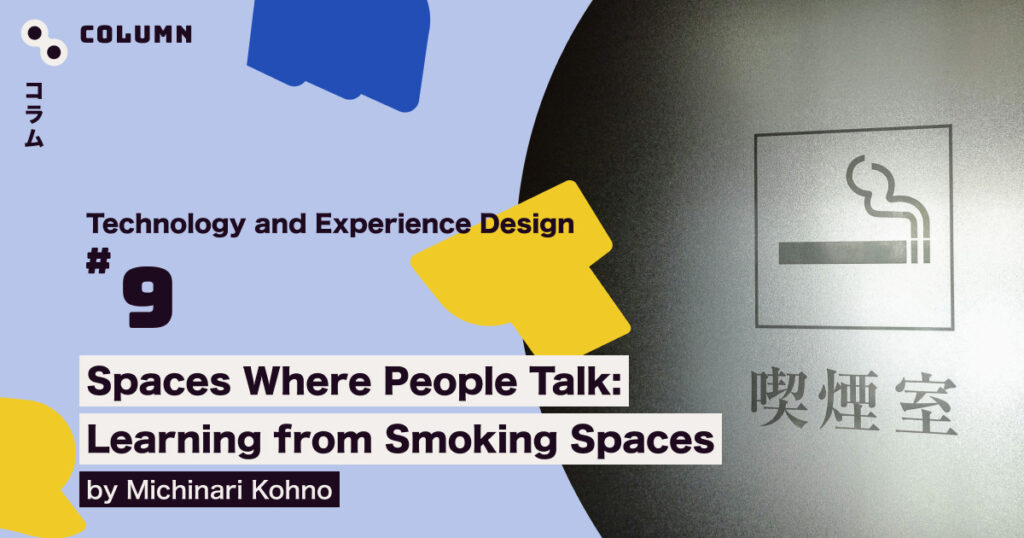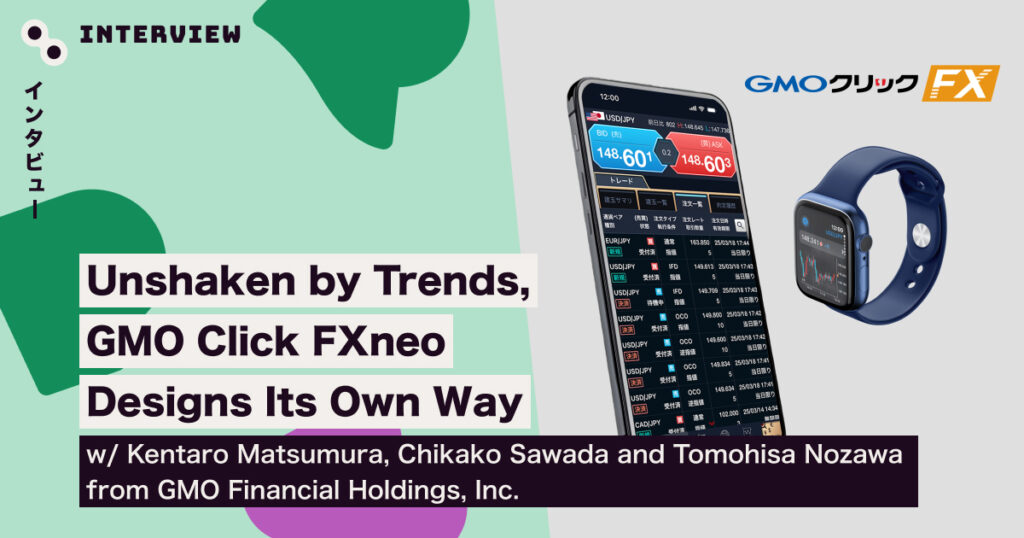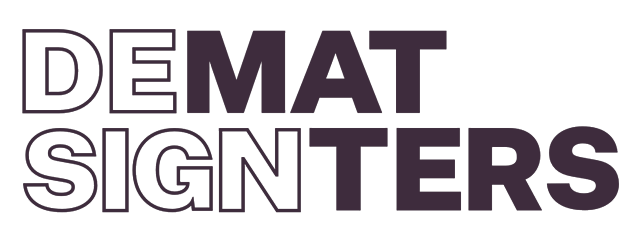Inside Hama-House’s Multi-Style Mastery of Illustration and Design
Everyone has their own beliefs and worldview, shaped by unique inspirations and experiences. While these might seem like disconnected moments at first, over time they come together to form the foundation of one’s work. It is this personal journey that leads each designer to create something distinctly their own.
This time, we delve into the creative roots of Hama-House, an illustrator who not only works on illustrations for various companies, but also brings their works to life using a diverse range of techniques such as animation and sketching.
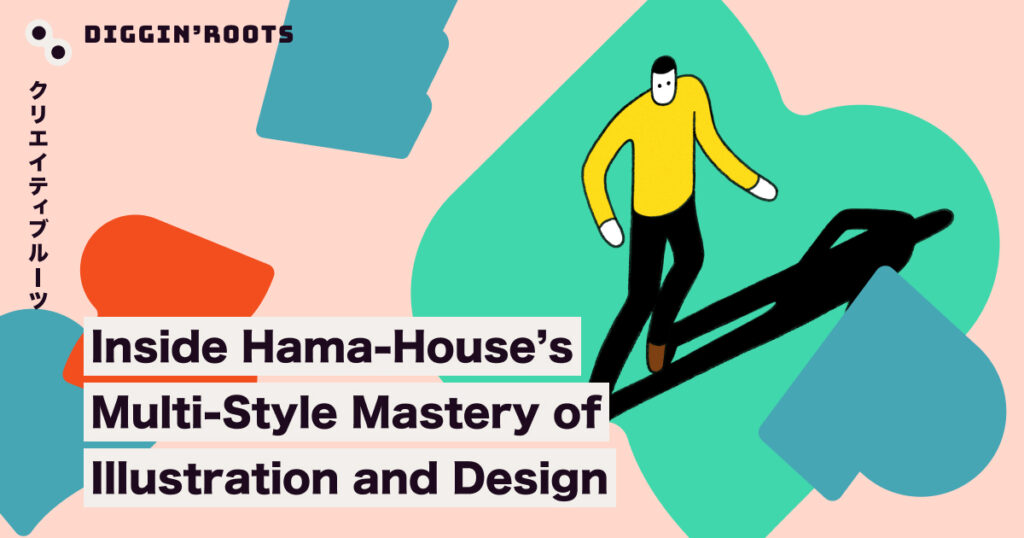
Hama-House
Illustrator & AnimatorAfter graduating from Kanazawa College of Art, Hama-House joined Sony PCL. There, they worked as a motion programmer for SONY QRIO and ROLLY, among other roles as a designer and director before going independent. Currently, they create artwork for various companies and also work as an animator and planner for the NHK E-Tele program Design-Ah Neo, producing the “Dashi” series, which airs regularly.
1. How do you approach work and creating things?
I was born in a fishing town in Miyazaki Prefecture and grew up in a pretty rough area of Hyogo. Maybe that’s why I’ve always wanted people who aren’t part of the design or illustration world to look at my work and just say, “Whoa, this is cool.” That’s something I think about every single day when I’m creating.
Making edgy work for a niche, sensitive audience has its appeal—but my real goal is to create art and animation that feels like J-POP: something with a unique twist, like an unexpected chord progression, but still super easy and enjoyable for anyone to take in.

When I graduated from art college and joined a video production company, I was full of ambition—I wanted to make something loud, artsy and mind-blowing. But as time went on, I started to realize something: the real challenge, and what’s actually the most interesting to me, is creating work that’s completely fresh—something no one’s seen before—but still instantly understandable to anyone who sees it.
As a result, my preference for making “something accessible to a wide audience” naturally aligned well with commercial media, which has allowed me to make a living as an illustrator.
Although I work as an illustrator, I don’t have a strong attachment to a particular style. I’m more interested in expanding my technical range so that I can change my artistic approach depending on the content.
For example, in my self-produced loop animation Email Rally, I received thousands of comments from around the world, but not a single one mentioned the style of the artwork itself. Instead, it focused on the content, and that’s the ideal outcome I aim for with my work.
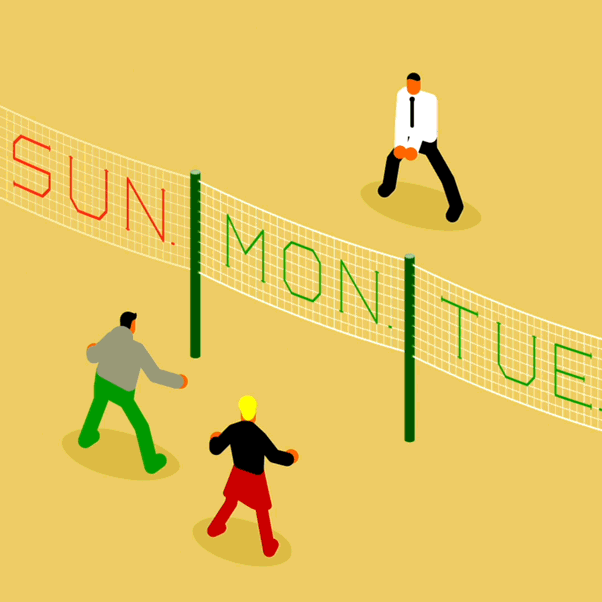
https://www.instagram.com/hamahouse/reel/Cq40ZJXr2_4/
2. How do you stay productive at work, and are there any tools or items you rely on?
Ever since I started working in this field, it’s been a bit of a personal mission to pick up and experiment with unfamiliar art materials from Sekidou (a famous art supply store). Lately, I’ve been really into this white liquid chalk. It’s got such a unique texture and feel, and I’ve been having a lot of fun seeing how it works in different pieces.

I usually sketch on colored paper, so I’ve been regularly experimenting with white drawing mediums. This white liquid chalk has a perfect balance of tone and texture—it’s quickly become one of my go-to tools. Right now, I’m working on a series where I draw on colored paper using just three colors: red, blue, and white. The liquid chalk adds a nice contrast and texture that really brings the pieces to life.
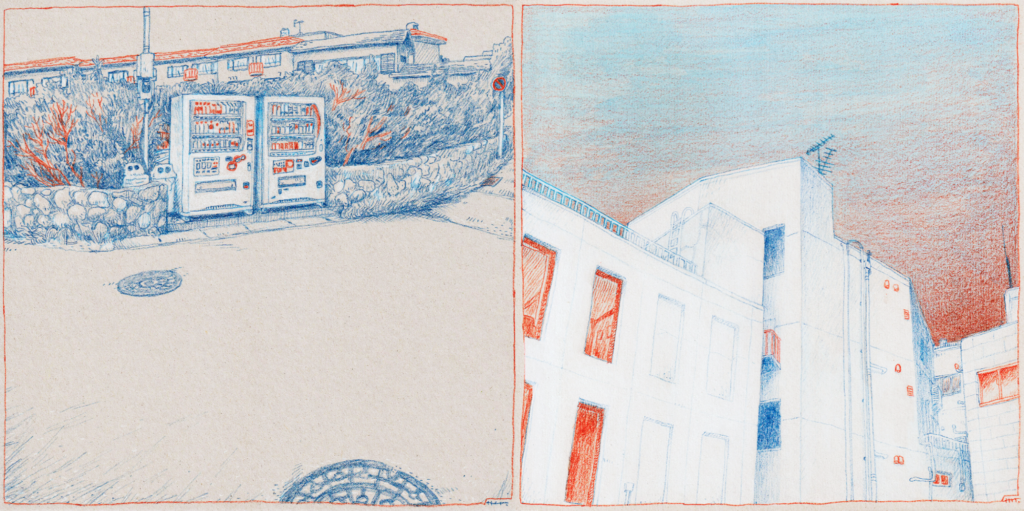
3. Who has influenced you the most?
Moebius, the French cartoonist, has been one of my biggest influences. He had a huge impact on creators like Katsuhiro Otomo (of AKIRA) and illustrators like Katsuya Terada. He also worked on concept designs for films like The Fifth Element—his imagination was on another level.
I actually got to see him speak during his last visit to Japan, at a lecture at Meiji University. He walked in dressed entirely in white—from his shoes to his clothes to his hair—almost glowing like some kind of god. The first thing he said was, “I envy all the artists.” That line really stuck with me. People who speak to audiences a lot know how to hook you with that first sentence, and he had it down. He even drew a comic live on stage using just a marker from the venue. It left a deep impression on me.
I was most influenced by him when I first started practicing drawing. I used to ask friends who were traveling abroad to bring back his books for me, and I would copy entire volumes by hand. Even now, I still have dozens of his books at home.

Another major influence for me is the Canadian artist Norman McLaren. There’s one piece of his that really stuck with me.
This work is from the 1960s, but the idea behind it is just incredible. It’s easy to understand, short in duration, and minimal. It makes you think, “If I try hard enough, maybe I can make something like this too.” All you really need is a clear idea, and if you can come up with the right concept, you can bring it to life… but that idea doesn’t come easily. When I first saw it, I was so blown away that I felt like there was nothing more for me to achieve. In my own independent animation work, this piece has become the standard and the goal I hope to reach one day.
What I admire most about his work is his constant experimentation with different techniques. I really resonate with this approach. He doesn’t limit himself to one style; instead, he adapts his methods with each project to bring his ideas to life. The idea always comes first, and then he develops the techniques to realize it. This is something that has deeply influenced me
4. Have any pieces of content influenced your design or way of thinking?
There’s a movie from around the year 2000 called Monsieur Castella’s Love. In it, people from the art world embody an elitist mindset, believing that “art can only be understood by those who are truly knowledgeable.” Within this world, the story focuses on a chubby, unfashionably dressed older businessman who becomes the subject of mockery. Despite not grasping the finer details of art, he is portrayed as the most genuine and pure in his love for art and paintings.

https://amzn.asia/d/cdFpspF
I watched this film right after graduating from art college and joining a video production company, full of enthusiasm to create “edgy things for edgy people.” That’s why the impact it had on me felt like lightning. The story is about a person who, despite seeming like an outcast in a group of stylish, sophisticated people, turns out to be the most sincere and straightforward.
This encounter with the film led me to think more deeply about the importance of “not creating things for just the edgy crowd.” This philosophy has since become a guiding principle in my creative process.
5. What were some things you loved or were passionate about when you were in your teens?
From late elementary school to high school, I was really into Agatha Christie. Mystery novels, in a way, are like puzzles. I enjoy the structure where the author gives the reader some hints in an open way, then gradually builds up toward the final revelation of the clues. While the quality of the writing is, of course, important, I find it fascinating how the whole blueprint of the story plays out.
Among her works, my favorites are Death on the Nile, the final episode of the Hercule Poirot series, Curtain, and of course, the iconic And Then There Were None. She has so many incredible works.
When I was a child, I wanted to be a novelist. As I read the story, I’d imagine how I might write it if I were the author, thinking about how they might be setting up clues. I’d read with a sense of anticipation, wondering if the author would manage to surprise me with a clever twist.
6. Have you recently seen a website or service that made you think “That’s a great design!”? What stood out to you about it?
I’ve been collecting European comics as a hobby for a long time, and among contemporary artists, I particularly like Manuele Fior and David Prudhomme. One of my recent favorites is “Mademoiselle Else”. For those who prefer to see the comics before buying, I recommend visiting “MAISON PETIT RENARD”, a specialty store for foreign comics in Itabashi, Tokyo.
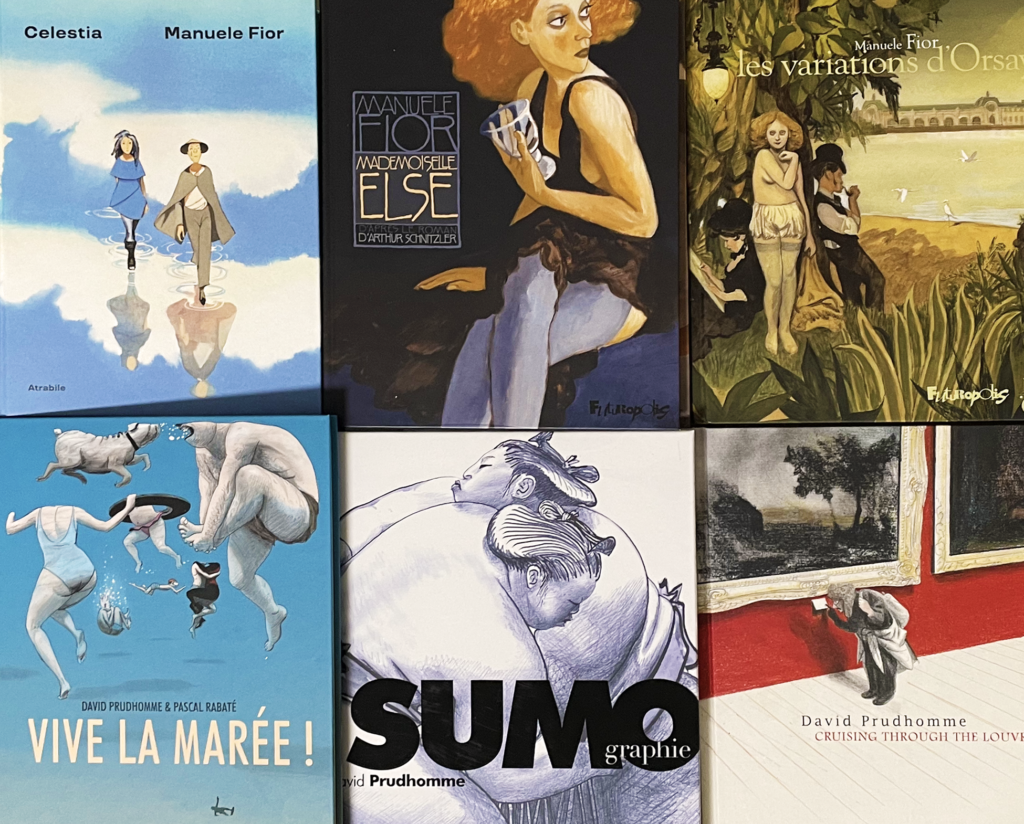
I mentioned “illustration” in response to the question about “design” because I see drawing as a form of design made up of lines, shapes, and gradients—something incredibly complex.
Illustrations with a clear style can be seen as having clear rules for how they’re created. Popular illustrations often come from a structure that people find appealing. If the way lines, shapes, and gradients are combined is unique and hard for others to copy, yet still relatable, that illustration can become popular.
What’s interesting is that when the structure of the design is too perfect, the image can start to feel too “designed” and lose its charm. To prevent this, illustrators mix in some “human touch” within the rules of the design. I believe this balancing act is also a kind of “design.”
As I mentioned at the Spectrum Tokyo Festival 2024, for designers who are getting bored with simple designs or feeling stuck, why not consider the path of becoming an illustrator? The world of intricate, complex designs that start from just a single line is so vast that even a lifetime wouldn’t be enough to explore it all. It’s a lot of fun!
Related Links
Hama-House’s Homepage https://hama-house.com/
Instagram https://www.instagram.com/hamahouse/



